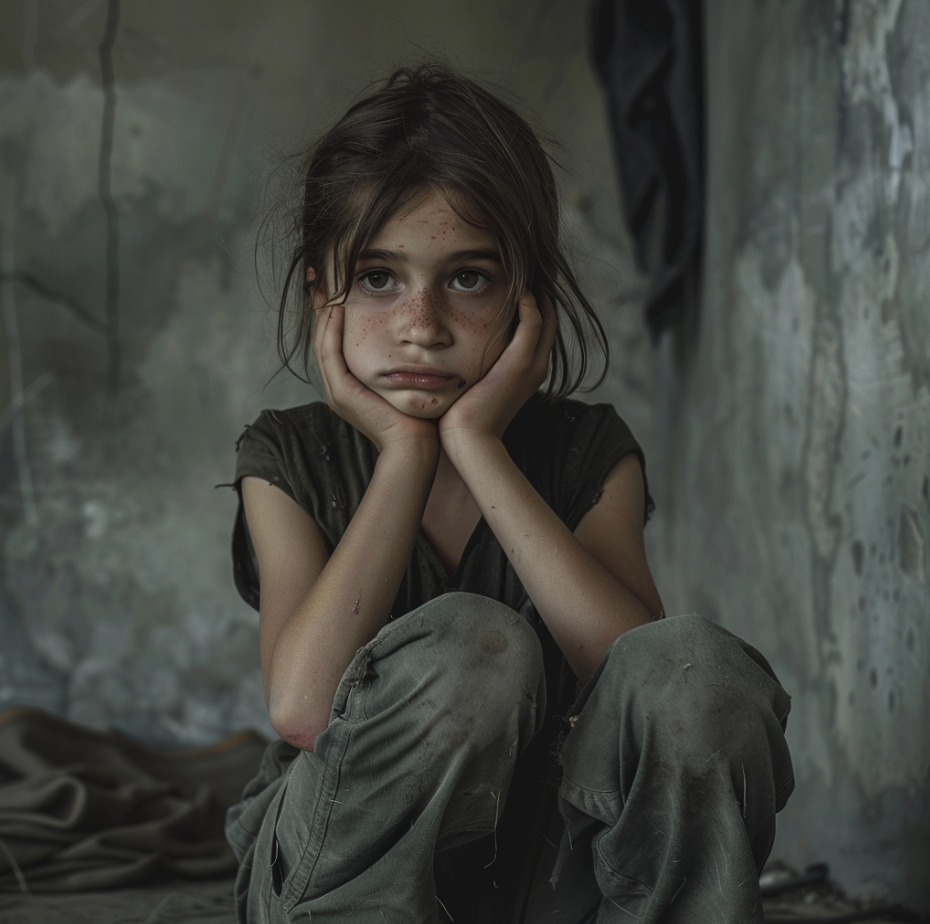The Devastating Impact of War on Children
War is a brutal and indiscriminate force that wreaks havoc on entire societies. Among war’s most vulnerable and tragic victims are children. The consequences of war on children encompass a devastating scope, leaving scars that may never fully heal.
Physical Devastation
The most immediate threat that war poses to children is the risk of death or severe injury. Bombings, gunfire, and the use of landmines indiscriminately target civilians, and children are often caught in the crossfire. Even if they escape direct harm, the infrastructure that supports their well-being is often destroyed. Hospitals, schools, and safe water sources may collapse under the weight of a war-torn environment. Children may become malnourished due to lack of food or contract illnesses due to contaminated water or inadequate sanitation.
Displacement and Family Separation
War forces countless children to flee their homes, sometimes becoming separated from their families in the ensuing chaos. They become refugees, often crossing borders into foreign lands where their safety and basic needs remain uncertain. Children who lose their parents or primary caregivers become incredibly vulnerable to exploitation or further violence.
Psychological Trauma
The psychological scars of war on children are deep and long-lasting. Witnessing violence, experiencing the loss of loved ones, and living in a constant state of fear can lead to post-traumatic stress disorder (PTSD), anxiety, and depression. This trauma can have a profound impact on their development, hindering their ability to form healthy relationships, succeed in school, and maintain emotional stability.
Child Soldiers
In war-torn countries, children are disturbingly often recruited or forced to join armed groups. Used as soldiers, scouts, cooks, or even suicide bombers, these child soldiers are robbed of their childhoods. Their innocence is sacrificed through exposure to violence and brutality beyond their comprehension. Even if they survive the conflict, the emotional and physical scars make reintegration into society extremely difficult.
Disrupted Education
Armed conflict destroys the basic infrastructure necessary for education. Schools may be damaged or repurposed into military barracks, while teachers often flee alongside other civilians. Children’s education becomes interrupted, setting them back in their development and making it much more difficult for them to secure better futures.
Long-term Impacts
The effects of war on children persist long after the fighting subsides. The physical and emotional traumas they endured can create ripple effects into adulthood. War zones often become breeding grounds for poverty, violence, and instability. Children who grow up surrounded by such conditions are more likely to experience difficulties in their adult lives, making the cycle of violence hard to break.
What Can Be Done
Addressing the devastation faced by children caught in war requires a multifaceted approach:
- Immediate Humanitarian Aid: Children in war-torn countries need basic necessities provided urgently. This includes food, clean water, medical care, and shelter.
- Protection: Strong international measures must be implemented to protect children from harm, including strict enforcement against the use of child soldiers and the targeting of civilians.
- Psychological Support: Children who have survived war should have access to mental health care to help them work through the trauma they’ve experienced.
- Rehabilitation and Reintegration: Efforts to help child soldiers reintegrate into civilian life are critical, with a focus on providing education, vocational training, and community support.
- Peace and Reconciliation: Ultimately, addressing the root causes of war is the only solution that can truly prevent children from suffering its devastating effects.
War is a human-made crisis, and we have a collective responsibility to protect children from its horrors. By prioritizing their needs and supporting organizations (such as Life In Color) dedicated to helping children in conflict zones, we can work towards a future where children are safe, protected, and given the opportunity to thrive.

